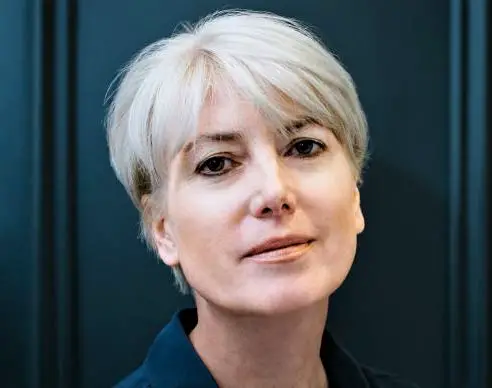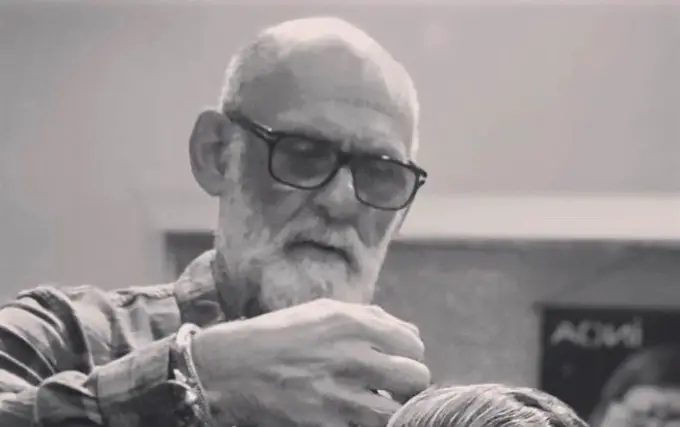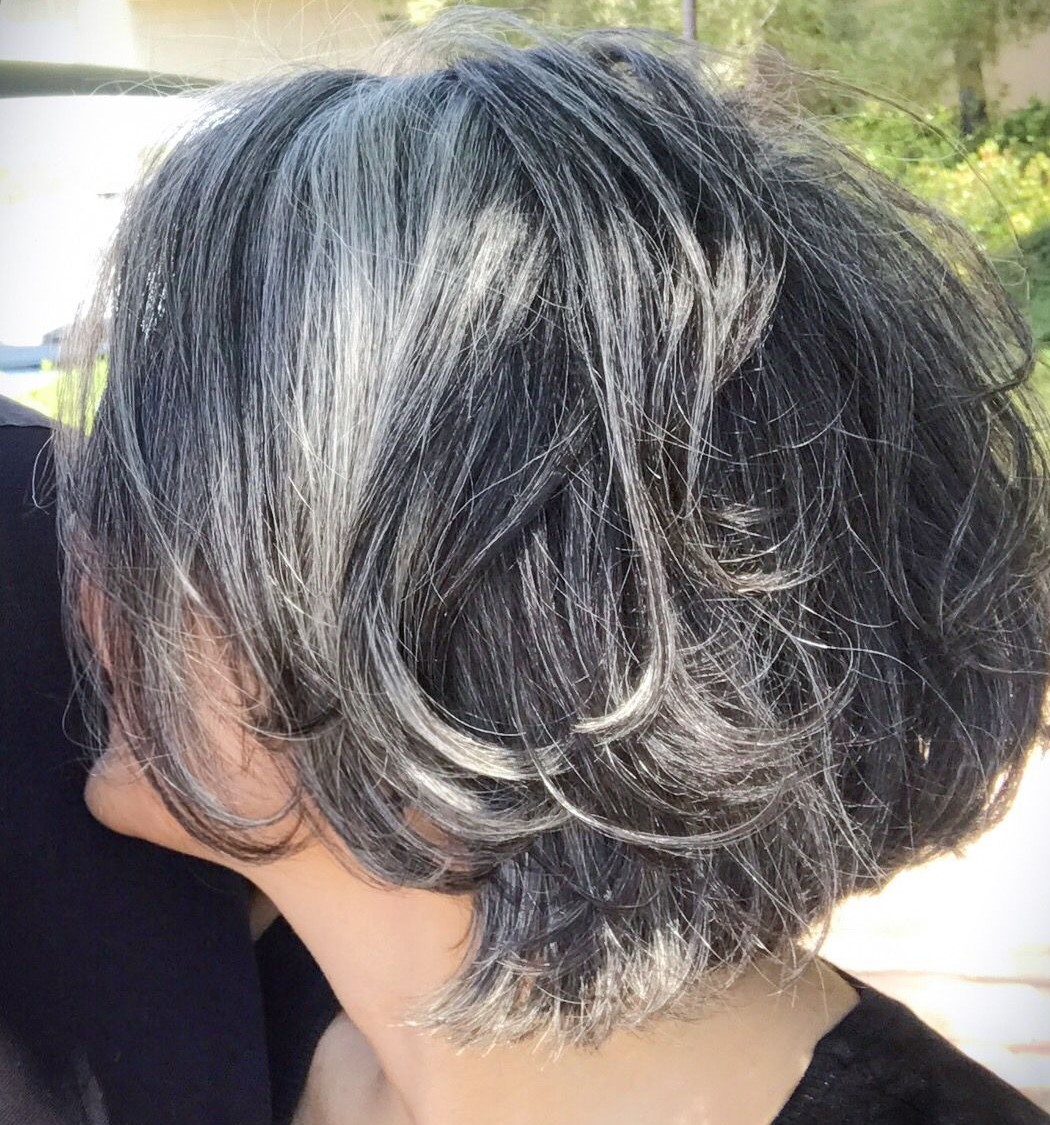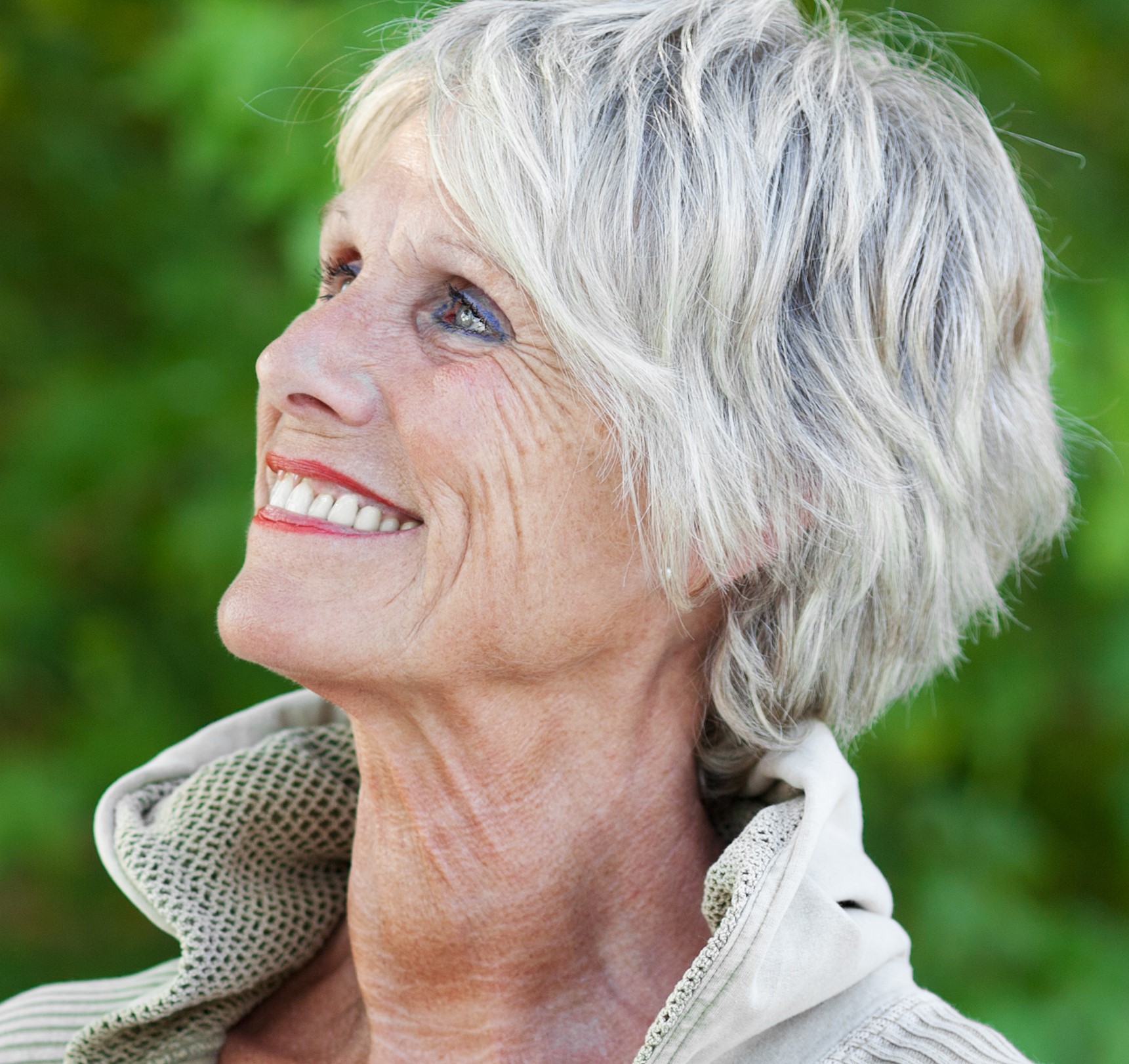
Gray hair. We may ‘welcome’ our first gray hair as early as our thirties or even twenties. By our fifties they may be taking over our natural hair color. By the time we reach 60 our natural color may now be anywhere from a steely graphite to snow white.
It’s likely that since those first gray hairs appeared, most of us have been concealing them with highlights or covering them completely with color. What would happen if we were to embrace the gray and stop trying to hide? It’s a decision that many of us face. Before taking the plunge, there are many factors to consider. They range from the emotional to the practical.
Will I look older?
Deciding whether to ‘go gray’ is not an easy decision. In fact, for many women it can be downright agonizing. The first question that pops into our heads is, “Will gray hair make me look older?” Followed by “Will I look like I don’t care about my appearance?” “Will I become invisible?” All valid concerns. On the other hand, topping your head with gray can be truly empowering.

Consider Christine Lagarde. She is the silver locks poster-woman world leader. She looks graceful and elegant, as well as smart and in command.
When 51-year old Financial Times business editor Sarah Gordon made the leap from brown to her natural white hair she was pleasantly surprised by the reactions of her friends, family, and colleagues. “Even those who cautioned against it were uniformly, and surprisingly, positive.

Several women friends have even voiced admiration at my bravery in trying out the new look.” But changing one’s hair color is not the stuff of bravery she adds. It was a big decision for her but in the end, she felt not only more empowered but more confident, even younger.
************************************************************************
Speaking of looking young, author Anne Kreamer found that it made little difference in how she was perceived when she decided to stop dying her hair brown and let it go its natural gray. From interviews, case studies, and her own experience she discovers many of the misconceptions we hold about mature women and gray hair in the book, Going Gray.
************************************************************************
How did this whole anti-gray thing start?
Blame Clairol. (Or thank them, depending on your POV.) Prior to the 1940s artificial hair color was reserved for harlots and chorus girls.

In 1943, Clairol began an aggressive advertising campaign that appealed to women’s anxieties about getting older. Gray hair was portrayed as not just a side effect of time’s passage, but a genuine evil: “GRAY HAIR—THE HEARTLESS DICTATOR”…
Without justice or kindness, gray hair can rule your life. It can choose your clothes—confine you to a few subdued colors. It can pick your friends—from the “older set.” It can dictate many things you say or do. No wonder other women refuse to tolerate this tyrant. They prefer to have young-looking hair…With Clairol, of course.
In the early ’50s, before the advent of Miss Clairol, fewer than 7 percent of American women colored their hair. By the ’70s, that number was over 40 percent. Today, according to WebMD, 75 percent of American women admit to color-treating their hair. (Among men, it’s only 11 percent.)
The late Nora Ephron wrote in I Feel Bad About My Neck, “today there are parts of Manhattan and Los Angeles where there are no gray-haired women at all.” A 2015 article in Elle Magazine, referring to the “heartless dictator” ad campaign, observed, “The war may be over, but for millions of American women, gray hair retains its tyrannical power.”
Blame that high-powered job. Or your kids.
Gray hair can start at any age. Some may see that first gray hair when they are quite young—even high school or college age—while others may be in their 30s or 40s. How early we get gray hair is largely influenced by our genes.
“Fifty percent of the population has about 50% gray hair at age 50,” says Dr. Anthony Oro, professor of dermatology at Stanford University. “As you age, your new hairs are more likely to be white. Every time the hair regenerates, you have to re-form the pigment-forming cells, and they wear out.”
Modern life doesn’t help. A 2011 survey for John Frieda Haircare found that British women are going gray earlier. Some 32% of women reported finding a gray hair by the age of 30, compared with 20% twenty years ago. The survey blamed stress.
I’m ready to make the leap. What now?

We sat down with hair stylist, Joe De France of Esthetica Salon in Montclair, New Jersey (self-styled as “the city in the suburbs”) and asked him to weigh in on the discussion. His clients are women and men of all ages, with many in the Blue Hare set.
More than a few are at the top of their professions; some are celebrities. “Going gray may be the best decision you ever make,” he says. “It may free you from frequent hair appointments. Or at least you’ll get you out of the salon quicker.” On the other hand, he adds, “you may decide that gray hair is not for you. Either way, going or not going gray is a big decision.”
Thankfully women are starting to embrace their gray roots; Mintel data research revealed that 68 percent of women 25-64 years old think it is acceptable to have gray hair.
Practical steps: where do I begin?
There are several ways to go gray, according to De France.
The two-year, natural technique
With this approach, you simply let your gray roots grow in naturally while your hair stylist regularly cuts off the colored ends. (Some brave women have their heads shaved and start fresh.) This process will take about eighteen months to two years, depending upon the length of your hair. Obviously, it’s easier if you have a short style and your hair grows quickly, and if your colored hair is blonde. This is a difficult process for women who have been sporting dark hair well into their gray years.
The subtle, gradual technique
This is the approach that most women will opt for (and the one that he undertakes most often). De France gives his clients highlights and low lights until all their hair is gray. You need to grow your roots out to about two inches so your hair stylist can see what your natural gray looks like. This procedure is typically called a color correction.
The immediate approach
It is possible to walk into your hair stylist as a brunette in the morning and come out with a head of gray hair in the evening. But be prepared to spend a lot of time (likely the entire day) and a lot of money (hundreds of dollars). You’ll also need to have realistic expectations.
Your stylist will begin by lightening your hair to platinum. You may discover that once your natural color has been stripped off, your hair is a warm platinum or even orange. If that happens, your stylist will be faced with a dilemma. They will either apply color and try to tone it to give you the gray you want, or they will continue to lighten it until they achieve the right shade of platinum.
Women call these women “brave”
Only about five percent of De France’s clients have taken the gray plunge. Many more have wanted to, he says, but fear held them back. These clients often refer to the women who have gone gray as “brave”. But, he adds, going gray is not an irreversible decision. “You can always go back.”
Next, find the right gray for you
Some women will have naturally beautiful gray hair. It can range from graphite to white as snow and complement your skin tone perfectly. Others, however, may find shades of yellow or orange that are anything but attractive and empowering. If you are one of the latter, you will need some color adjustment.

If you have colored your hair for some time, you have no doubt experimented with color over the years. If you had naturally dark brown hair, you may have added blonde highlights to brighten your look. If you were a mousey brown, you may have gone completely blonde. In short, you know that Mother Nature doesn’t always get it right in choosing the best hair color for your skin.
The same applies to gray hair. Your natural gray hair color (the color of two to three weeks of new hair growth) will not necessarily be the best gray for your skin tone.
 Once your hair has grown in gray, you may be surprised by the color. According to De France, “Your hair may grow out in patches of darker gray and lighter gray which you might not like.”
Once your hair has grown in gray, you may be surprised by the color. According to De France, “Your hair may grow out in patches of darker gray and lighter gray which you might not like.”
This is where an experienced hair stylist comes in. His/her experience and guidance can spell the difference between a gray you can embrace and one that makes you cringe when you look in the mirror. There is no substitute for experience in choosing a gray color that works with your skin undertone.
Three key factors to get the right gray: toner, toner, toner
You’ve heard that the three most important considerations in real estate are location, location and location. Well, for gray hair color, it’s toner, toner and toner. But most people have no idea what a toner is. The mistaken belief is that when you get highlights, the goo that is painted on the tin foil is color. It’s not.
De France explains: “Bleaching is what we use to take pigment out of the hair. It strips away the color but doesn’t add any. Your final color comes from the toning process. Toning is the most important part of the color process.” To choose your toner, you and your hair stylist will consider your skin undertone and choose a toner—the product that is going to impart the right gray color to your hair.
Will gray hair make me look older?
This is probably the number one concern of most women. Gray needn’t make you look older if you keep these three cardinal rules in mind:
Find the most flattering toner for your gray hair and have your hair toned regularly to ward off the dreaded blue or yellow casts that made our grandmothers look old. (And yes, that’s what inspired Blue Hare.)
Your gray hair can be straight or it can be curly, but it can’t be frizzy! Nothing says old and dry like frizzy, gray hair.
Choose a smart, modern, easy-to-maintain haircut. It can be short or long, but must suit your face—and body, and personal style. Be committed to maintaining it every six weeks or so. Ragged hair that is long past its due date will not be your best friend.
Remember, whether you color your hair or decide to go with your graying locks, the secret to youthfulness in our 60s and 70s is health and vitality—and that sparkle in your eyes.
Photo credits: Top: Queen Elizabeth II, royal.uk; Christine Lagarde, georgiapapadon.com; Sarah Gordon, FT.com
* * *
You may also like
- Is collagen the fountain of youth? It depends.
- Think you need less sleep as you age? Think again.
- Can women over 60 wear red lipstick? Yes, and we show you how
Go to the Blue Hare homepage for more articles for fabulous women
